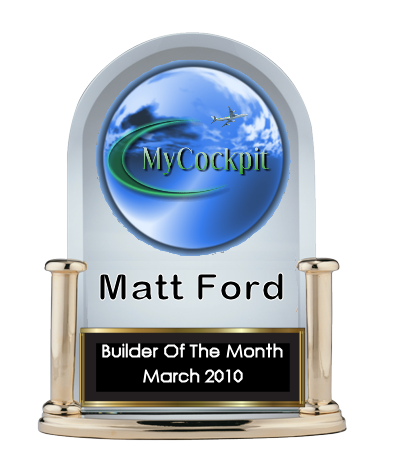
It's time again and with privilege to welcome another new Builder of Month. This month we present to you a builder who has inspired many Flight Simulator Enthusiasts and is one of the early pioneers and a forefront leader in our community of builders Matt Ford.
Click on "Read More" for the full interview.
.
We are proud to present "Matt Ford" as Builder of Month for March 2010, for his outstanding work and dedication to his project and his contribution to the Flight Simulator Builder Enthusiast Community.
Can you give our readers more information about yourself. Most of us only know you only as Matt Ford the Home Cockpit Builder?

Yes, most people only know about me but there is another part of the equation that would not make my sim possible and that's my wife Lori. She's an opera singer and voice over artist from New York that has a tremendous amount of patience for the hobby and all of the time it entails. She's incredibly supportive and understanding, especially considering the time and money involved. We do not have kids, which of course helps quite a bit, our only kid is our dog Fozzie Bear.
It's my understanding, your real life job is a "Lighting Designer". I am sure this is a hectic job?
How did you get introduced to the Cockpit Building hobby?
I've been in lighting for quite some time, first starting as a lighting designer for the concert touring business. Some of my biggest clients were Whitney Houston, Bob Seger, and Diana Ross. It was extremely hectic as I would often be on the road for up to around 300 days a year. Of course this was in my 20's and early 30's and quickly realized I couldn't continue living this way so I moved to Los Angeles and got into the television lighting. It's equally as hectic but at least when the show is done I go and sleep in my own bed as opposed to a bunk on a tour bus
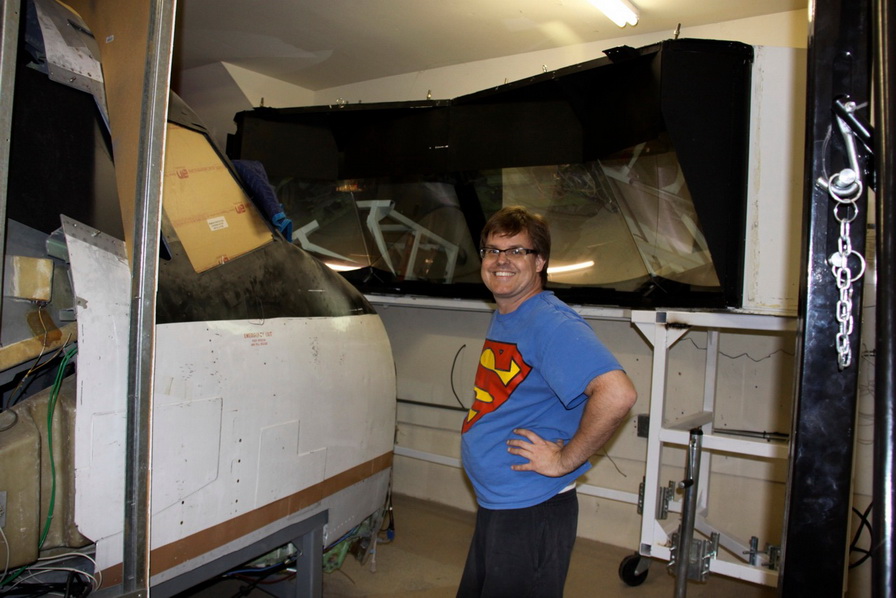
One of the funniest stories I remember...during that time my mother owned a small business. During the summers I would often hang out there and was going through an Aviation Week and Space Technology magazine and saw an ad for Korry Electronics which had a picture of the dimmer cap indicator lights used on the 727. I filled out one of the information request cards in the magazine and a couple weeks later received the Korry catalog. About one week after that we are all sitting in the office and a man in a business suit comes in through the door and asks for Matt Ford. Everyone pointed to this 12 year old kid sitting in the corner and to this day I still remember the look on his face. He introduced himself as the Area Sales Manager for Korry Electronics.
How and When did the construction of the Boeing 737-700 Simulator Commence?
1996 to be exact.
Any particular reason why you selected the Boeing 737?
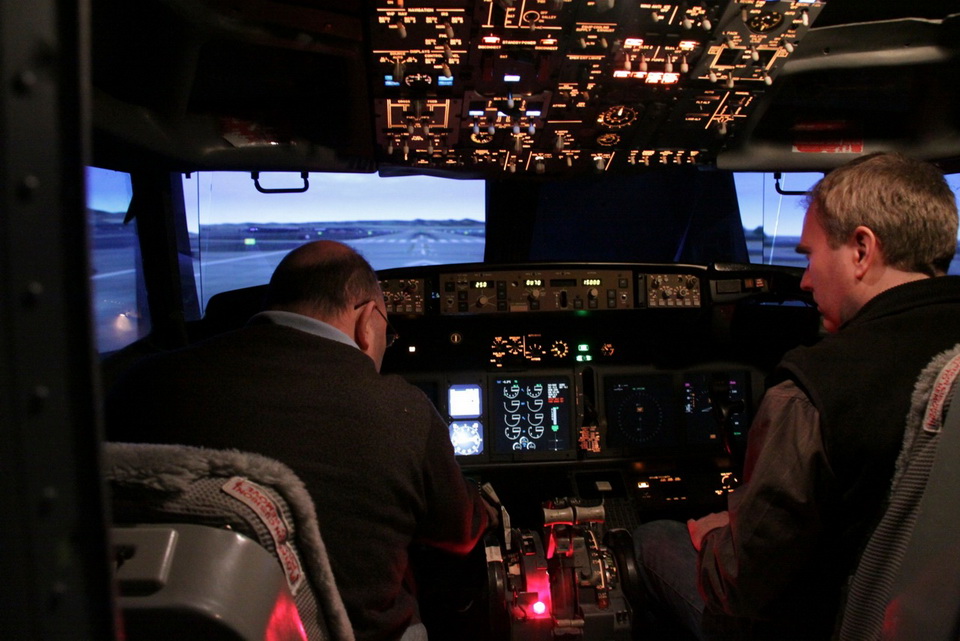
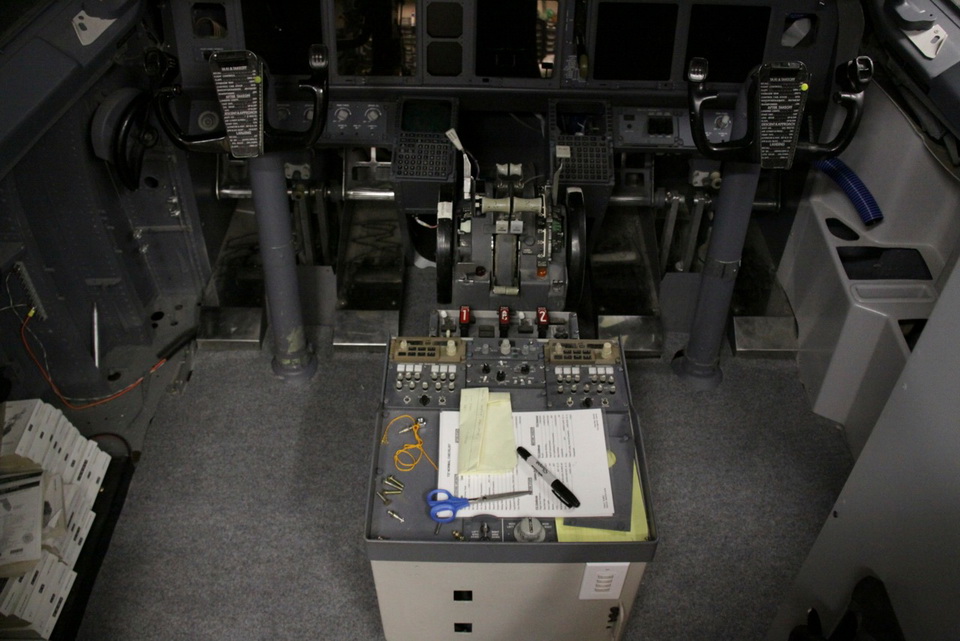
Backing up a bit, around the same time (Divine Intervention of course) I came across this cockpit, I found out about James Price in Livermore California. He built from scratch a Boeing 737 that he had in his spare bedroom. He was one of the first to do this sort of thing. He recognized my interest and we became quick friends and he was actually out here just last weekend helping me with the cockpit. Anyway, with his encouragement, I jumped in with both feet and was the first in the hobby to use a real commercial cockpit for simulation purposes.
I can't wait to ask you this question...most of them have chosen the FS as a platform. Any particular reason for choosing X-Plane. ? Also can you share with us your experiences.
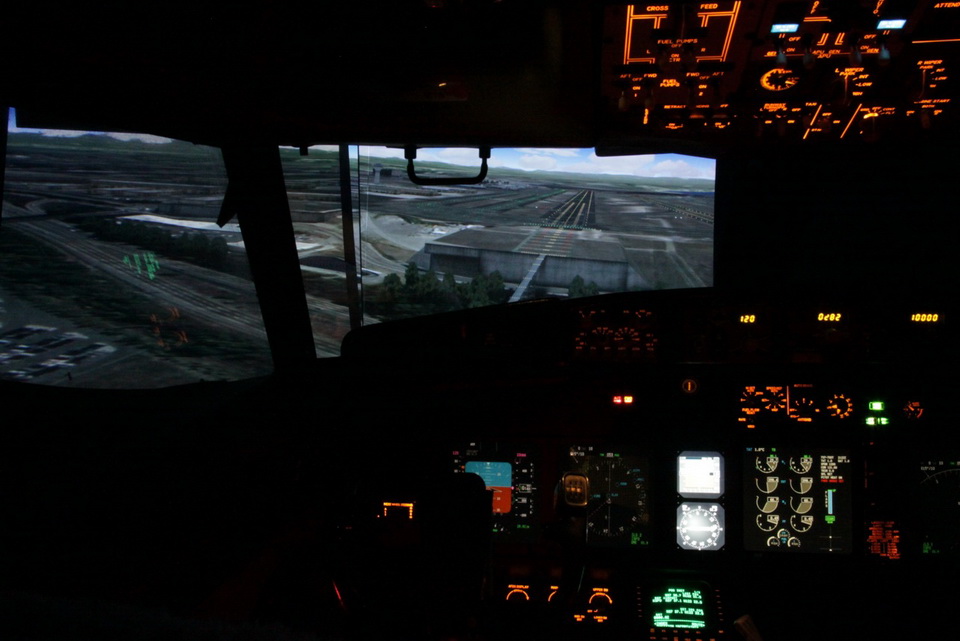
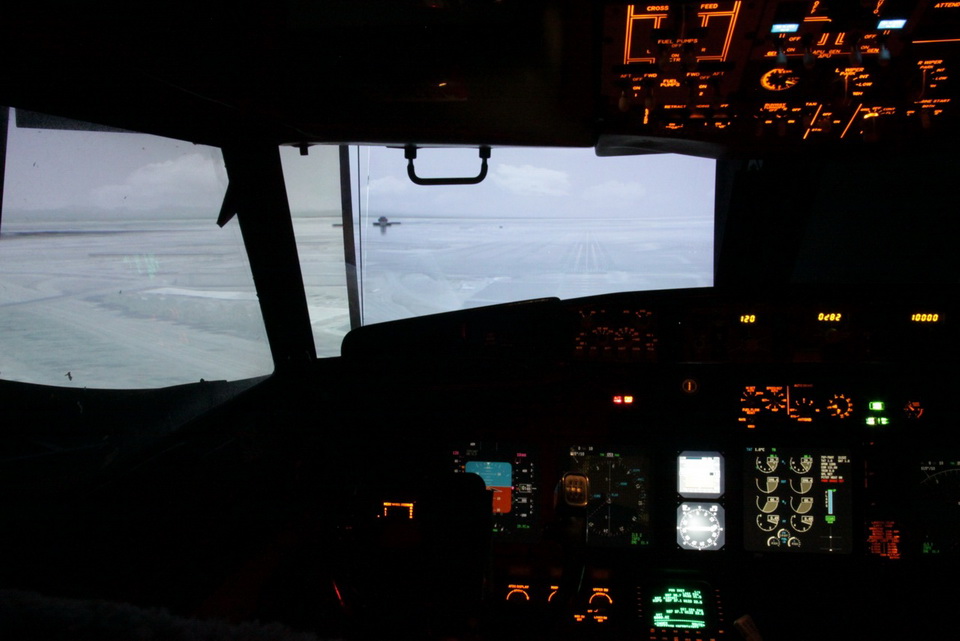
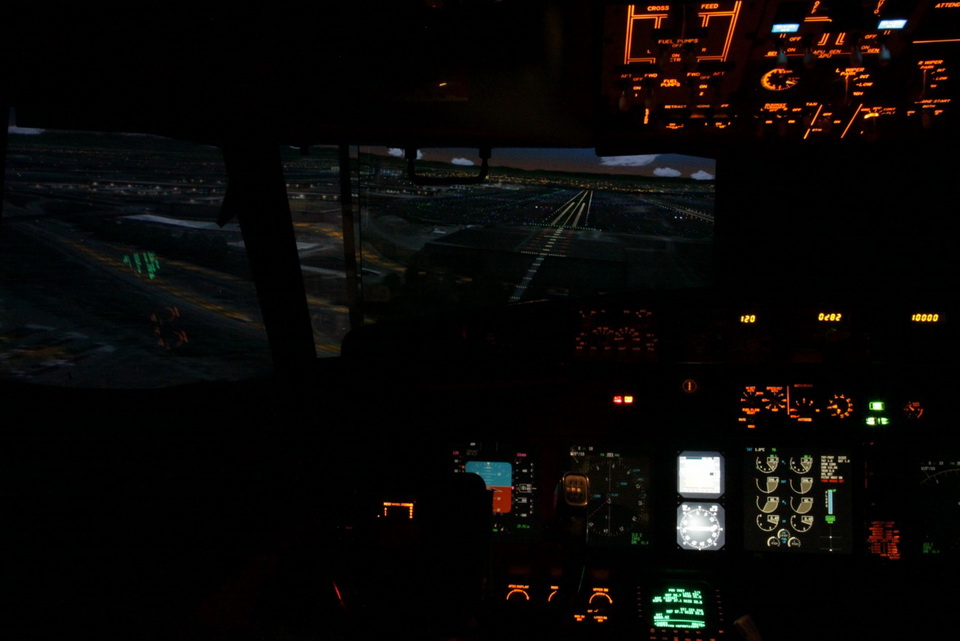
Great question. I've been with Microsoft Flight Sim since it was on the Macintosh platform back in the mid 80's and was on the FSX beta team. I flew FSX for quite some time and have been very happy with it. About a year ago I acquired RSI's Raster XT Level D Visual system. In full motion simulators (FFS or Full Flight Simulators), what generates the outside visuals is called the Image Generator or IG. It draws the outside world according to position data sent from the simulation host. The Raster XT is a image generator currently being installed in most of the brand new Level D simulators being produced and is the only IG that runs on off the shelf computer hardware to acquire FAA Level D certification. What is required to make the system run smoothly at 60 frames per second is a simulator host that has precise data timing. We found that the data output from FSX was too erratic to drive the IG in a smooth manner. X-Plane, however can generate UDP data packets at a precise 60hz which is what I needed. What's more the data output possibilities is much more extensive in X-Plane. So in my setup I have a plugin for X-Plane that sends customized UDP packets to the IG Host machine. This data contains, lat, long, pitch, heading roll, altitude as well as weather info, time of day etc. With X-Plane the visual system always operates at 60hz no matter where you fly or what you do with the airplane.
Overall I've been very pleased with X-Plane. Understand, however that I am not using the X-Plane visuals at all. What you see out the window of my sim is the Raster XT Image generator. I have over 300 hours in the 737-700 full motion flight simulators and have found that the x737 for X-Plane is by far the closet flight model I've found to the multi-million dollar sim, far and away more accurate than MSFS. My only complaint is that turbulence effects on the aircraft are exaggerated on the jets for some reason, causing massive movements in the visual scene. When you pick up turbulence from clouds in X-Plane you feel like you are in a Cessna 172. This has been a big complaint from simmers and real airline pilots that have flown my sim so I'm hoping that will be addressed at some point.
The avionic modules on the simulator look stunning. Did you buy them as plug play units or you actually build them ?
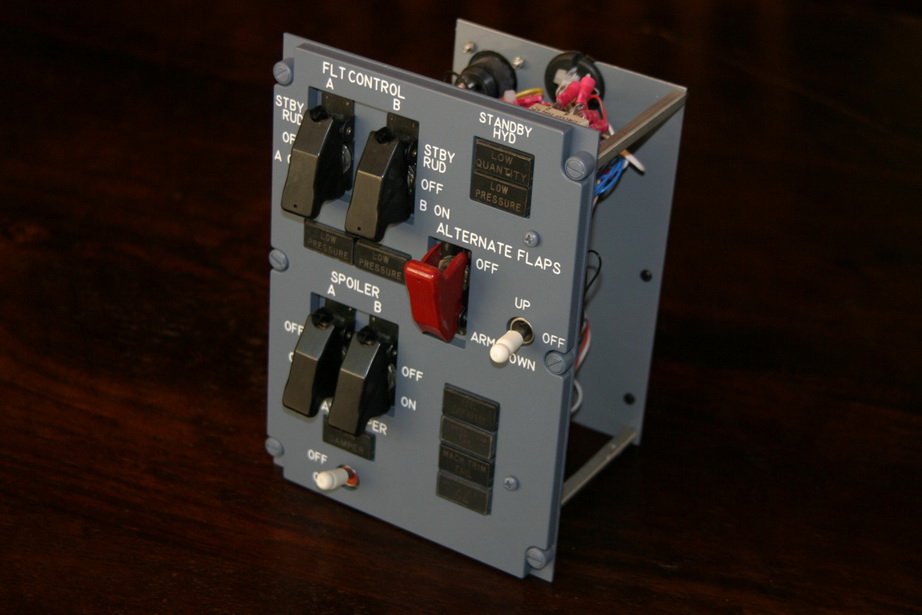
Yes and no. For quite some time all of my modules were from a 737-200. Along comes Peter Cos with the amazing IBL backlit lightplate series for the 737-700. I could not resist and purchased the forward panel and overhead panel set. Peter worked with me to ensure that the real switches and indicator lights from my 737-200 modules would work with his product so I simply stripped out those parts from the -200 modules and built up new modules using his backplates and lightplates. In about two weeks I had a cockpit that 90% resembled a 737-700. His products are amazing.
What was the most challenging part of your cockpit building?
By far time and money. Every once in a while I get an email from a prospective builder and what I always try to get across is that it is potentially a very expensive hobby in both time and money. Although I have thoroughly enjoyed it, I would never do another cockpit again. It's a tremendous amount of work! Currently my biggest issue is just finding time to work on it. Luckily we don't have kids otherwise there would probably be zero time, but due to my crazy work schedule being self-employed, it's often hard to find the time, or find a block of time to complete one task.
Is your cockpit complete? Any future plans?
Far from it. The overhead is complete with the exception of the aft overhead. I also have the parts for a real 737-700 Collins MCP, I just need to machine the backplate and I can put that together. The other thing I need to implement is some sort of active control loading system. That's the one big thing missing from my sim.
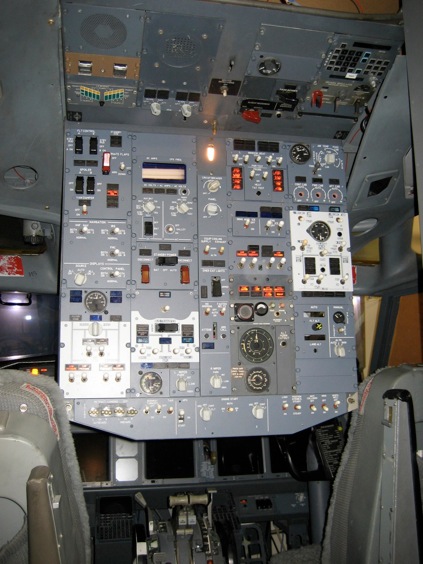
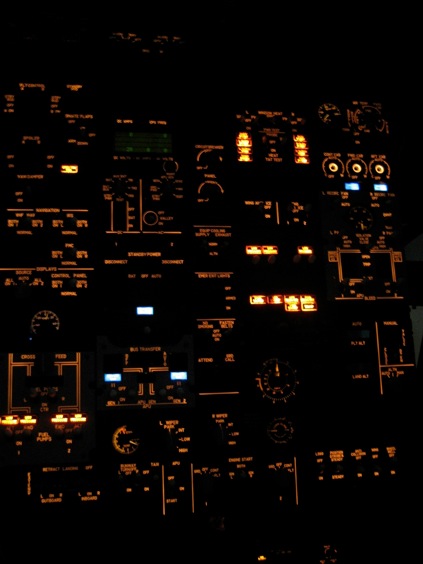
You have an awesome visual display. I understand you use Collimating Mirror Display System? For the benefit of our readers, what does that mean? How did you go about creating it?
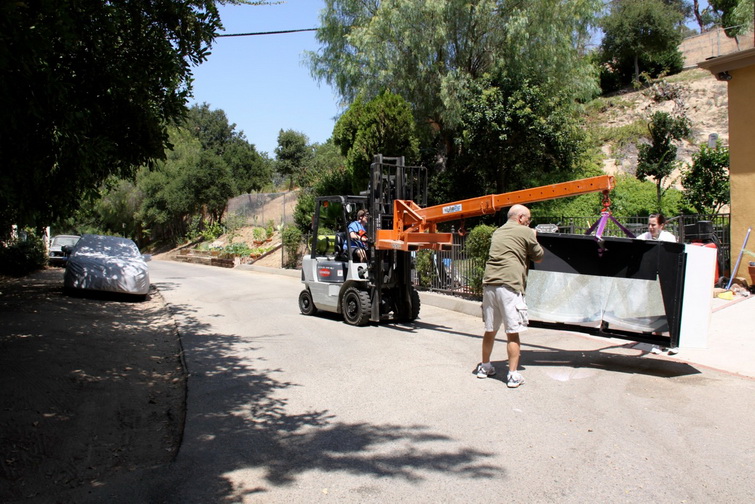
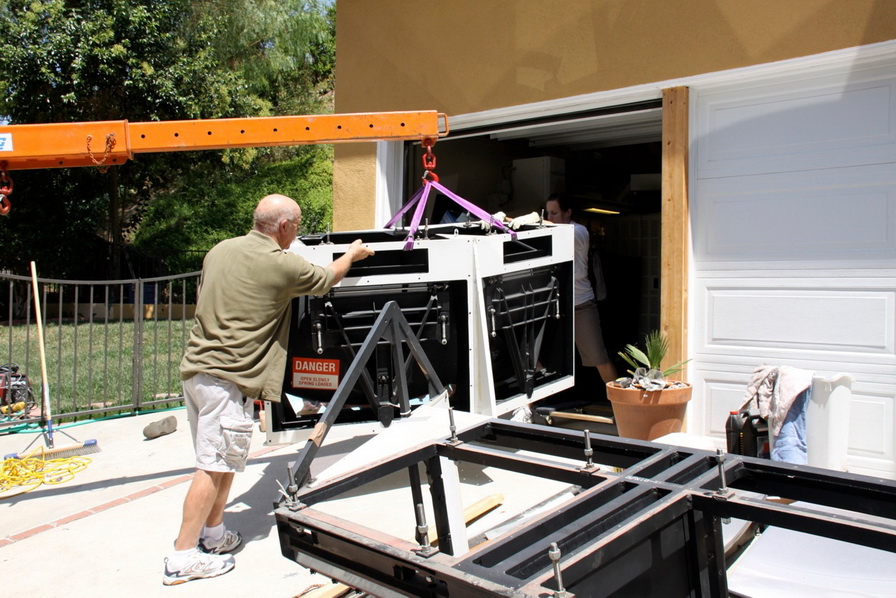
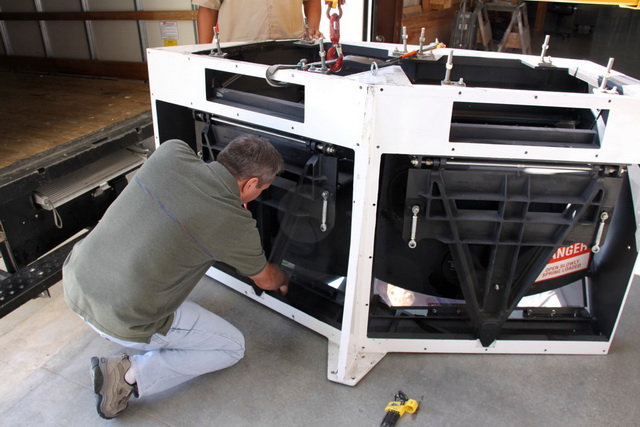
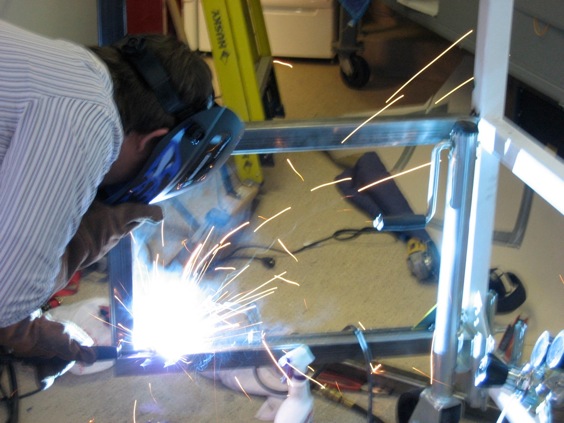
Thank you very much. Collmated display systems were developed back in the early 70's for use in FFS's. When you project an image on a flat screen a pilot cannot see accurate depth cues since you are essentially looking at a image projected upon a flat surface. A collimated display system essentially takes the image of a computer monitor or projector and bounces the image via a one way mirror onto a large spherical mirror. The mirror not only doubles the image size, it sets the optical focal point to infinity which is how we view a true 3D world. In this way, a taxiway sign that is 50 feet in front of the pilot eyepoint will truly appear 50 feet away. My system is the older collimated system that uses glass mirrors. The system is composed of 4 mirrors, two for each pilot with a 25" monitor above each mirror. Each monitor is driven by it's own IG computer and produces a 45 degree horizontal and 40 degree vertical field of view. The mirrors are butted together so you end up seeing from the seat a 90 degree horizontal and 40 degree vertical field of view per seat. They are quite heavy and you cannot see the visuals out of the other pilots window since your head needs to sit at the focal point of the mirror which is designed to be where the pilots eyes would be when the cockpit seat is properly adjusted. In the late 80's a mylar system was developed which was lighter weight, had a 150 degree horizontal field of view, and your head did not have to be at a focal point resulting in cross cockpit viewing. Because of the new technology the older optical systems I had were being replaced. My collimated optical system came off of a Boeing 737 full motion simulator and was a kind donation. To construct something like this from scratch would be near impossible due to the optical tolerances the optics and framing require. Back in the day my optical system sold for about $500,000.00.
How often do you use your simulator, weekly?
It varies. I go through phases where I'm trying to get work done in the airplane so I might do a test flight to run a software test (we use our own custom software that simulates the 737-700 systems to near Level D fidelity). If I'm not in a building mode I might fly a couple nights a week. My absolute favorite thing to do is fly on Vatsim. I absolutely love it as it adds a an incredible level of realism.
What are your favourite routes you like to fly on your simulator?
There are a few. Thing thing with a commercial image generator is that you purchase the airport individually, so it's not like Flight Sim where you can land anywhere. With mine I have KSEA, KSFO, KPHX, KDEN, KASE, KMCO, KJFK, KMIA, KMEM so until I add more airports I'm limited to landing in those areas (although the visual system has 5meter world wide terrain, you need a physical 60 square mile airport model to land at the airport). I tend to fly quite a bit from KSFO to KPHX and back or KSEA to KSFO. KPHX and KSEA are some of RSI's most complex airport models so I like flying there. If I'm in for a long hop, I'll go KMIA to KMEM and shoot up to KJFK.
What advice would you give to new cockpit builders?
My advice is that you can take it to any level you want. You can have just as much fun in the hobby and not do an entire cockpit or pursue the level of fidelity that I have. I know lot's of folks that have half a 737 setup and they love it. So if anything, don't look at mine and get discouraged. Yes it takes time and money but it's very gratifying. When I first started in the hobby 15 years ago you did not have people like Peter Cos and Flight Deck Solutions around building things. Now there is so much available to the hobby at a very reasonable price it's much easier these days for someone to jump right in.
Matt thank you from the entire Mycockpit.org community for this fascinating and informative interview.
If you would like to find out more about Matt Ford's Cockpit, go to http://www.737sim.com
MyCockpit, Inc. Copyright 2010


 Section
Section Categories
Categories
